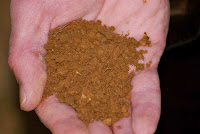 ittle busy and a little lazy when not busy. In any case, my daughter and I planted on May 9. Thanks to the generosity of Dave D. and Kathy G., we were able to fill the entire garden with free baby plants. Thanks to Kathy for the strawberries and to Dave for the collection of tomatoes and peppers. Each tomato plant is different from the rest, as are the peppers. Maura and I planted:
ittle busy and a little lazy when not busy. In any case, my daughter and I planted on May 9. Thanks to the generosity of Dave D. and Kathy G., we were able to fill the entire garden with free baby plants. Thanks to Kathy for the strawberries and to Dave for the collection of tomatoes and peppers. Each tomato plant is different from the rest, as are the peppers. Maura and I planted: Tomatoes
- Jubilee Yellow
- Yellow Pear
- Beefsteak
- Better Boy
- Big Boy
- 4th of July
- Hot Banana
- Anaheim
- Tabasco
- Mariachi
- Spanish Spice
- NuMex Sandia
and some great looking strawberry plants! Maura started out eager to help plant, as this has been "our" garden from the start. Al as, after helping transfer a couple of peppers from their containers to the ground, she lost interest so I finished up by myself.
as, after helping transfer a couple of peppers from their containers to the ground, she lost interest so I finished up by myself. 
 as, after helping transfer a couple of peppers from their containers to the ground, she lost interest so I finished up by myself.
as, after helping transfer a couple of peppers from their containers to the ground, she lost interest so I finished up by myself. In case you're new to this, as I am, I've heard the goal in transplanting plants is to move them as intact as possible from the container to the ground, with the depth of planting being about equal as it was in the container (e.g., the plant should have the same amount of itself above the soil as it did before). One exception to this is in the case of the plant being root bound. This refers to the tendency of plants to get their roots bound up in a tight knot while inside the confined space of a container. In this case, you should loosen up the roots as best you can to allow them to open up into their newfound home in the ground. Just be gentle.












